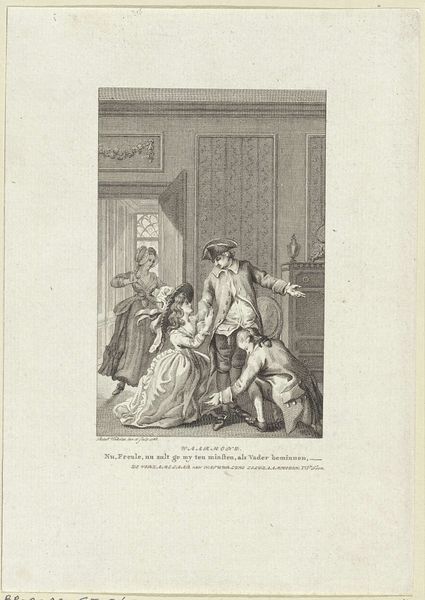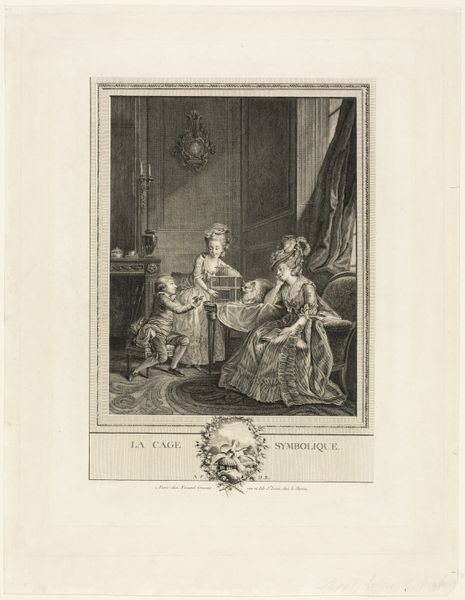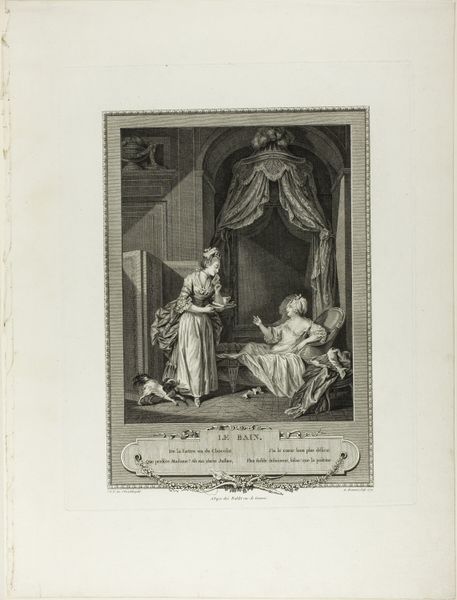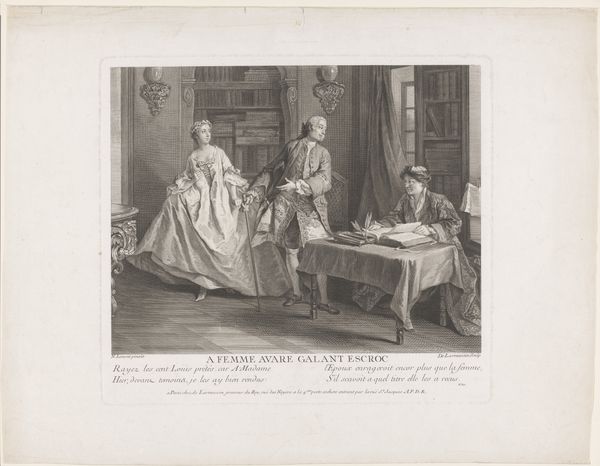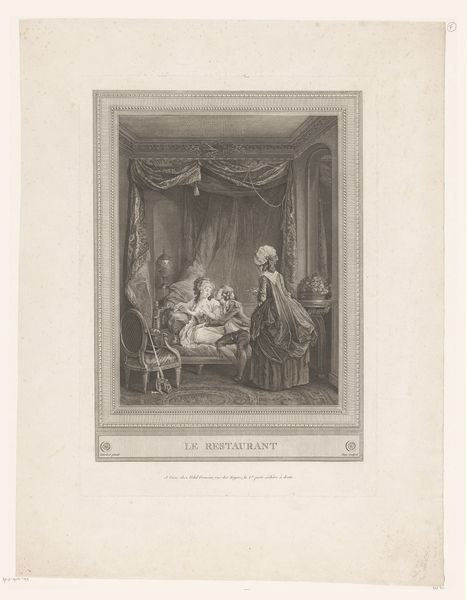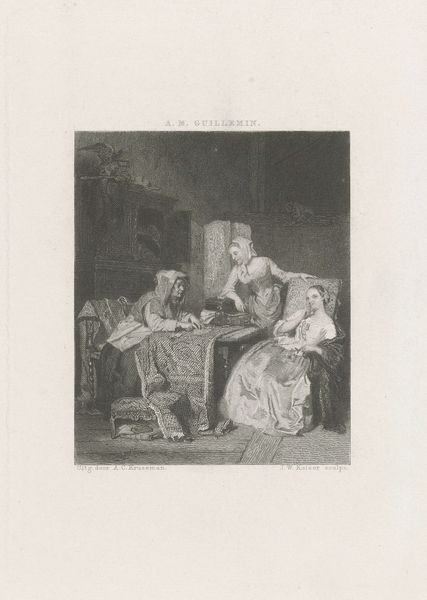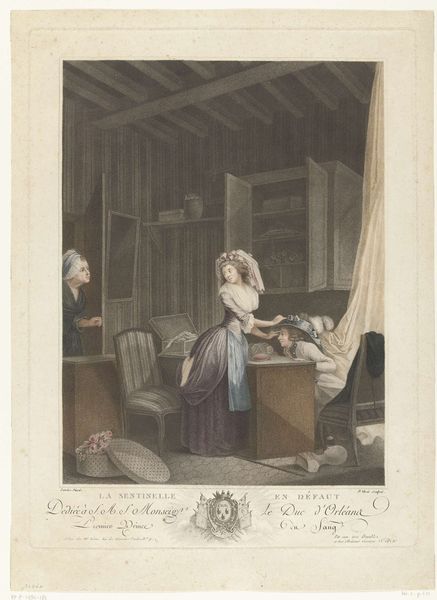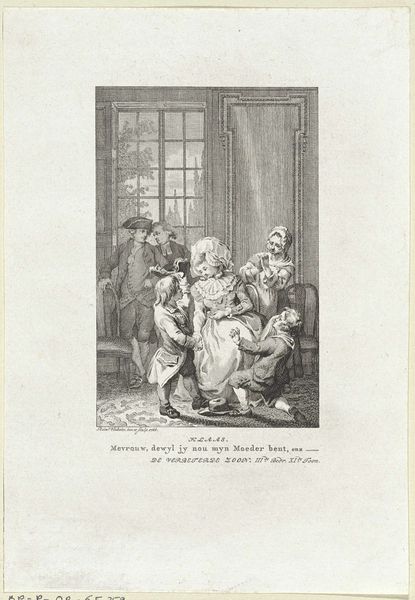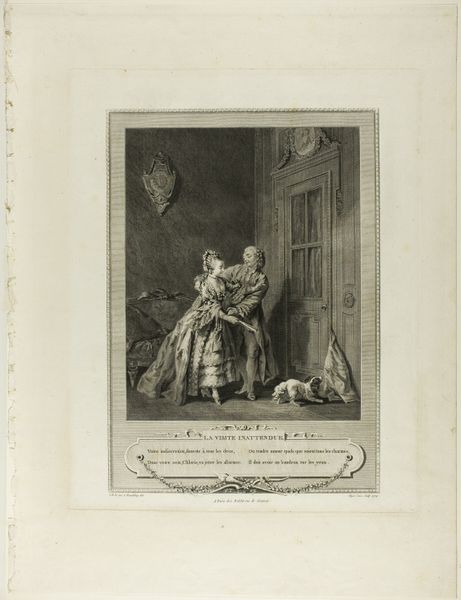
Announcement of Pregnancy, from Monument du Costume Physique et Moral de la fin du Dix-huitième siècle 1776
0:00
0:00
Dimensions: 273 × 221 mm (image); 412 × 325 mm (plate); 542 × 414 mm (sheet, folded)
Copyright: Public Domain
Curator: This etching, made on paper by Pietro Antonio Martini in 1776, is titled "Announcement of Pregnancy, from Monument du Costume Physique et Moral de la fin du Dix-huiti\u00e8me si\u00e8cle". It depicts a genre scene within a Rococo setting. Editor: My initial impression is one of constraint. It's a tightly framed composition with so much attention paid to detail in fabrics and furnishings. There’s almost an oppressive quality about it. Curator: Notice how even this "private" moment carries immense public weight. The announcement of pregnancy wasn't just personal; it was a matter of dynastic significance and social standing. We can discern symbolic power interwoven here in the domestic sphere. Editor: Absolutely, the emphasis on luxurious materials, like the shimmering silk gown, reinforces this notion. The print itself, as a reproducible object, further underscores the circulation and consumption of such societal values, doesn't it? Look at the finery; the screen, the furniture, all hinting at specific labor and industry behind the art and the setting represented. Curator: I find the expressions quite interesting. Everyone present is rather stoic, not exactly radiating joy but projecting controlled composure, in keeping with expectations around bearing heirs in the late eighteenth century. We see echoes of Madonna imagery perhaps? A celebration of fecundity yet also a burden? Editor: That resonates. Considering the laborious etching process involved, Martini is also declaring artistic mastery, aligning the print medium itself with themes of craft, industry and even "reproduction" in its own way. It becomes an artwork announcing artistic "pregnancy," if you will. Curator: And consider what the Rococo style here tells us about the period, those ornate, swirling details—not merely decoration but an encapsulation of prevailing attitudes toward gender roles and class structure. Everything serves a purpose. Editor: True. And the scale, being a print, emphasizes this proliferation of images, bringing such a monumental life event into the homes and hands of a wider audience beyond the elite. Curator: Considering these different facets, it speaks volumes about cultural values at that time. The symbols offer a look into the era's societal expectations and gender dynamics. Editor: Indeed. The print reminds us to consider both the delicate details, and also the broad strokes of social history shaping not only art, but the very lives depicted within it.
Comments
No comments
Be the first to comment and join the conversation on the ultimate creative platform.
